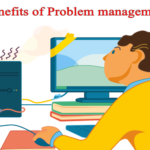Rather Than Addressing The Root Causes Of Issues, Service Departments Tend To Focus On Solving Immediate Issues. MIRAT Tells You How!
The conundrum is that more incidents are caused by the same issues. It’s critical to strike a balance between ITIL Problem Management and Incident Management if you want to optimize both processes. However, it isn’t that hard to accomplish with ITSM tools like Root Cause Analysis.
You can see how adding ITIL Problem Management to your already overflowing to-do list might be a bit daunting. However, by adopting an agile mindset and striving to be both responsive and proactive, it is possible to streamline the procedure. In this article, we clearly define root cause analysis to assist users in problem-solving in mirat ai’s ITSM. Here are five ideas to think about while performing root cause analysis using MIRAT’s software:
1. The First Step Is To Separate Incidents From Issues.
If you keep everything in one place, it’s easy to get overwhelmed. When it comes to answering a phone call or implementing ITIL Problem Management while using MIRAT’s software, look for an all-in-one solution. However, separating any complications from incidents and logging them in a separate area can help accomplish RCA for IT with mirat ai’s software. In other words, you have complete knowledge of the problem, a record of your investigation, and an understanding of the resources required to execute root cause analysis.

2. Maintain A Database Of Known Errors
In the end, it’s a “known error” if you’ve figured out the root cause of the problem and are confident in your findings to move forward in the ITIL Problem Management process. Known problems, like incidents, should be kept in a separate location from the problem itself while conducting root cause analysis. Why? In other words, it gives you more leeway to change how you classify things. This means that if you need to reclassify an error after the investigation while conducting RCA for IT you can do so. As you move deeper into the root cause analysis, the system keeps track of your shifting priorities and your evolving way of thinking. Making a list of issues you’ve already encountered and the fixes you’ve found will make ITIL Problem Management easier. It will also help locate these issues again in the future. In the end, you can close all of these Known Errors while performing on MIRAT’s software, so that when it’s time to report on them or implement root cause analysis, everything is in order. Hooray!
3. Utilize The Five Whys
While performing RCA for IT, don’t get bogged down in a stale routine while executing ITIL Problem Management. Take the initiative to learn about new ways of spotting and delving into issues and carrying out root cause analysis. When you put your tried and true methods to the test, you can gain a fresh perspective and a new approach to the root cause analysis. In the case of troubleshooting a server, the 5 Whys method may lead you to ask a different question than you would have otherwise asked. This also assists users to define root cause analysis . Instead of jumping to conclusions, it encourages you to dig deeper until you find the problem. While implementing root cause analysis the next time a problem arises, doing some proactive background research on possible solutions can pay off handsomely. This enhances ITIL Problem Management greatly while conducting RCA for IT.
Essentially, The 5 Whys Is To Keep Asking while performing root cause analysis is:
-
Why something is happening over and over again.
-
What gives the sky its distinctive shade of blue? This question is frequently asked by kids because blue light waves disperse more easily.
-
Why? Because of the higher frequency of the blue light waves.
-
Why? Because physics dictates it!
-
Why…? I think you get the idea. If you want a long-term solution, this is the way to go.
These questions assist to understand and define root cause analysis easily and make ITIL Problem Management simpler than ever before.
4. It Is Important To Use An Issue Handler.
To improve your overall process, you should have a person responsible for ITIL Problem Management at the top of the organization who also overlooks the root cause analysis process. Your coworkers will be inspired to work together toward a common goal when they see someone in charge who is genuinely interested in finding solutions to problems while trying to accomplish RCA for IT. But there’s more to it. You can use the information they provide to validate the work you’ve done in ITIL Problem Management by keeping a close eye on and analyzing trends. Having a Problem Manager on hand can help keep the team moving forward while also conducting root cause analysis.
5. Allow Your Employees To Contribute By Sharing Their Expertise.
It’s great to have a boss, but working together is even better. Allowing your team to participate in the ITIL Problem Management process will help you make the most of their knowledge and abilities. As a bonus, if you have observant colleagues who are adept at spotting problems in the workplace, you may be able to carry out root cause analysis more quickly. There’s a good chance they’ve had some first-hand experience responding to incidents, and that gives them a unique perspective on the underlying issues. With the help of your team, cultural change can be ingrained, which results in improved ITIL Problem Management helps define root cause analysis better.
Improve The Way You Do Things.
Mirat.ai’s Best Practice Service Management e-book can provide some inspiration if you’re looking for improving problem management and to define root cause analysis in ITSM processes without having to slavishly follow each step every time.
FAQs
What Is Problem Management?
The processes and activities that make up ITIL problem management are tasked with overseeing the lifecycle of all potential problems that may arise in an IT service. Its primary objective is to keep incidents and problems from occurring. This is achieved by performing detailed root cause analysis with MIRAT.
Mirat.ai’s IT Infrastructure Management is Affordable & Easy to use! Get your Dashboard ready in only 5 Minutes and understand more about in-depth root cause analysis. Request for Trial/Demo now (or) Contact our Team Now.
Contact Information:
Hema
Sales Executive
Phone: +1-315-636-4213
Email: sales@mirat.ai
Website: https://www.mirat.ai/


